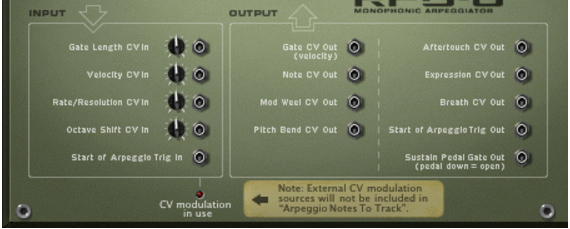In addition to the above CV inputs, there is a “Start of Arpeggio Trig In” connector. This restarts the arpeggio figure from step 1 when this input receives a gate trigger. See “Triggering arpeggios” for a tip on how this can be used. If something is connected to this input the RPG-8 will not generate arpeggios unless a Gate trigger is received.

